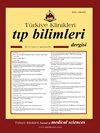Effects of Sirtuins on Female Reproductivity and Oocyte Quality: Traditional Review
Q4 Medicine
引用次数: 0
Abstract
SIRTs are descr i bed i n the deacetylases class III fam i ly. The members wh i ch are i nduced by n i cot i nam i de aden i ne d i nucleot i de (NAD + ) and are closely assoc i ated w i th var i ous deoxyr i bonucle i c ac i d (DNA) h i stone prote i ns. In humans, SIRTs fam i ly i s compo-sed of seven members; SIRT1-SIRT7. The major i ty of SIRTs show NAD + -dependent deacetylase act i v i ty. SIRT4 and SIRT6 funct i on as mono-adenos i ne tr i phosphate-r i bosyl transferase. SIRT5 bes i des deacetylat i on, i t can also generate demalonylat i on and desucc i nylat i on. The presence of SIRTs has been reported to be present i n var i ous compartments i n the cell for example; SIRT1, SIRT6, and SIRT7 was lo-cated i n the nucleus, SIRT3, SIRT4, and SIRT5 i n the m i tochondr i a and SIRT2 i n the cytosol. Recents i nvest i gat i ons demonstrated act i ve i nvolvement of family of nicotinamide adenine dinucleotide (NAD+)-dependent deacetylases and is able to cat-alyze post-translational modifications of proteins. It has been documented that, SIRTs respond to metabolic challenges, inflammation molecules, and oxidative stress. Many studies have linked SIRTs with longevity and having anti-aging activity. Our knowledge of SIRTs in reproduction has grown increasingly over the last few years. The majority of these research is carried out primarily on the effects on SIRT1 on female reproduction. It has been demonstarted that down-regulating SIRT1 trigers the reduc- tion of ovarian reserve. Many research has demonstrated that, SIRT1 regulates proliferation and apoptosis in granulosa cells. Activity studies of SIRTs opened the discoveries of the functional aspects of different types of SIRTs in improving the overall quality of in vitro oocytes in humans and animal models. It has been documented that, SIRT1, SIRT2 and SIRT3 protect oocytes against postovulatory aging. The relationship be- tween derangement of SIRT signaling and the imbalance of reactive oxygen species and antioxidant defenses in female reproductive organs has also been documented. The present review aims to put forward informa-tion on the mechanism and cellular role of SIRTs and give an update of sirtuin research in female reproduction under physiological and patho-logical conditions. The final goal of this work is to put forward the ther- apeutic potential of SIRTs in female infertility.Sirtuins对雌性生殖能力和卵母细胞质量影响的传统综述
sirt是在去乙酰化酶III类家族中被描述的。这些成员是由n - 1诱导的,它们是n - 1核酸(NAD +)和n - 1核酸(NAD +),并与n - 1脱氧核糖核酸(DNA)和n - 1蛋白质(n - 1)的变化密切相关。在人类中,sirt家族由7个成员组成;SIRT1-SIRT7。主要的sirt显示,NAD +依赖性去乙酰化酶是一种活性酶,SIRT4和SIRT6是一种单腺苷型活性酶,是一种磷酸核糖基转移酶。SIRT5不仅可以产生去乙酰化酶,也可以产生去乙酰化酶和去乙酰化酶。据报道,sirt的存在存在于细胞的不同区室中,例如;SIRT1、SIRT6和SIRT7位于细胞核中,SIRT3、SIRT4和SIRT5位于细胞中,SIRT2位于细胞质中。最近的研究表明,它参与了烟酰胺腺嘌呤二核苷酸(NAD+)依赖的脱乙酰酶家族,并能够催化蛋白质的翻译后修饰。已有文献表明,sirt对代谢挑战、炎症分子和氧化应激有反应。许多研究都将sirt与长寿和抗衰老联系起来。在过去的几年里,我们对生殖中的sirt的了解越来越多。这些研究中的大多数主要是关于SIRT1对女性生殖的影响。研究表明,下调SIRT1可引起卵巢储备功能的降低。许多研究表明,SIRT1调控颗粒细胞的增殖和凋亡。sirt活性研究开启了不同类型sirt在人类和动物模型中提高体外卵母细胞整体质量的功能方面的发现。已有文献表明,SIRT1、SIRT2和SIRT3保护卵母细胞免受排卵后衰老。女性生殖器官中SIRT信号紊乱与活性氧和抗氧化防御失衡之间的关系也有文献记载。本文综述了SIRTs的作用机制和在细胞中的作用,并对sirtuin在生理和病理条件下的女性生殖中的研究进展进行了综述。本工作的最终目的是提出sirt在女性不孕症中的治疗潜力。
本文章由计算机程序翻译,如有差异,请以英文原文为准。
求助全文
约1分钟内获得全文
求助全文

 求助内容:
求助内容: 应助结果提醒方式:
应助结果提醒方式:


